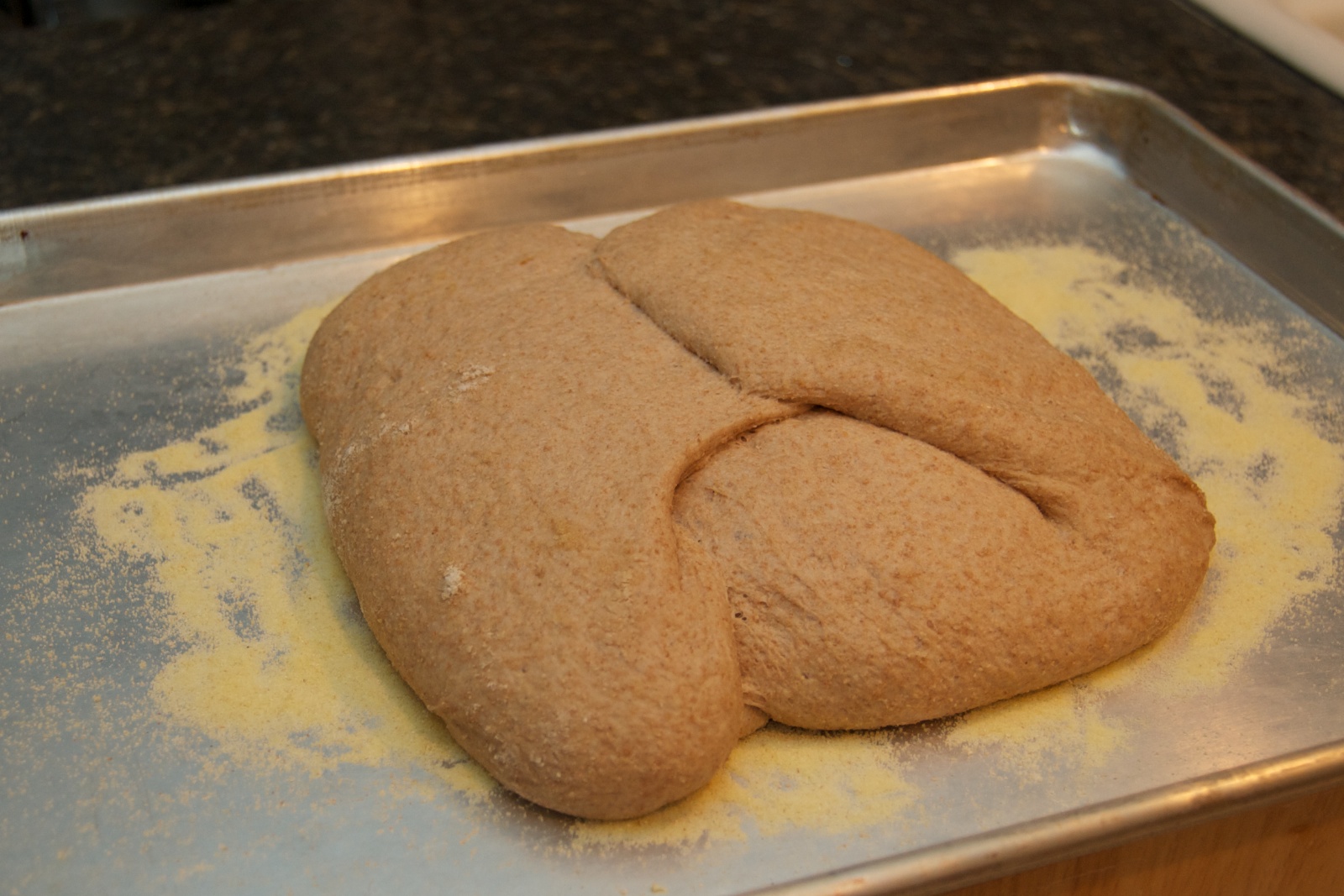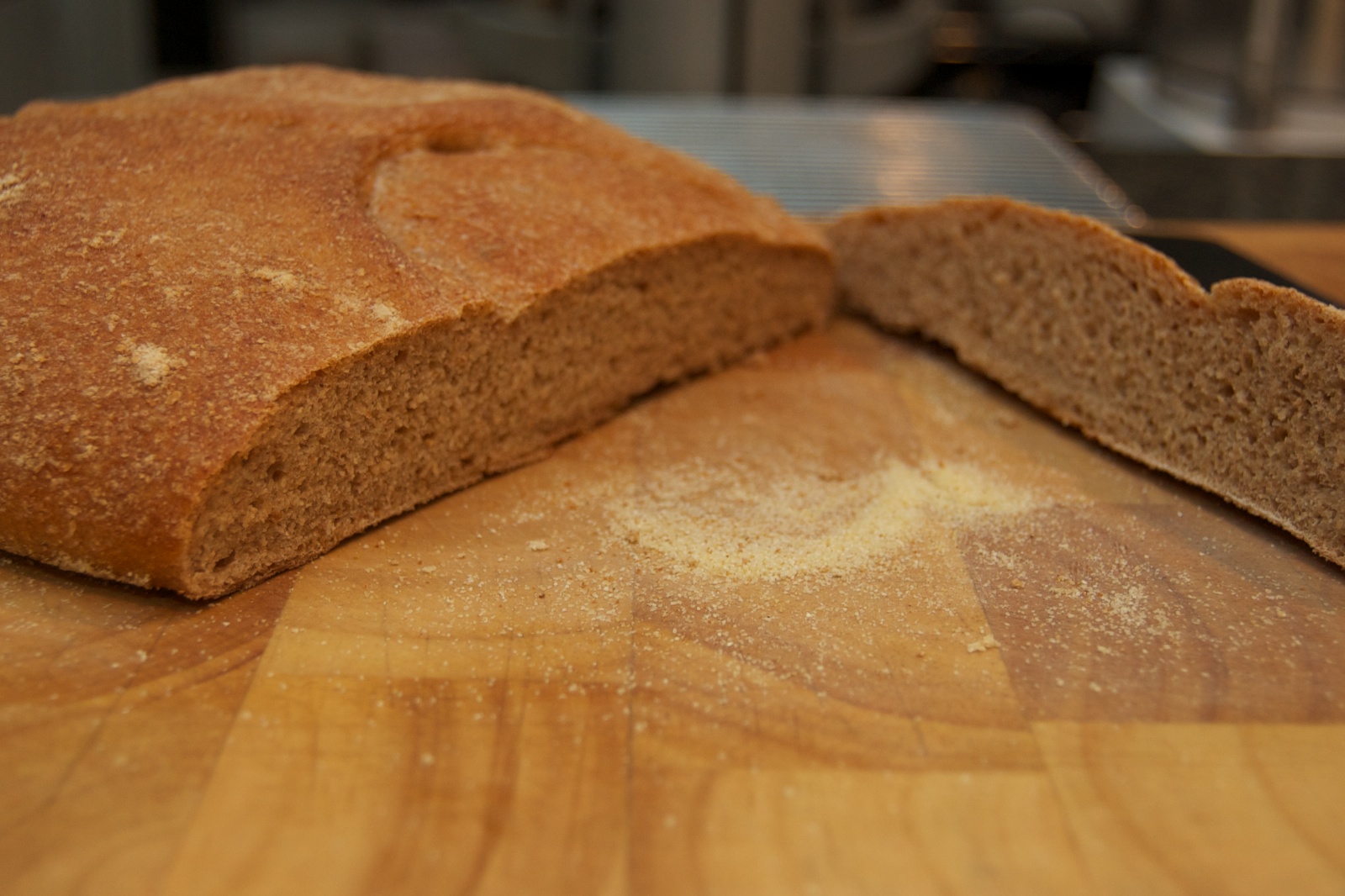Ciabatta Fail #2
My first attempt at making ciabatta was a failure and produced a nice white bread which was nothing like ciabatta. Because I'm a gluten for punishment (get the pun?) I decided to not only re-attempt ciabatta but also make a whole grain version. I'm really into whole grain bread these days.
Short version of the story: I produced a nice, very flat, loaf of wheat bread. But still not ciabatta. I should point out that I'm not even sure you can make a loaf of whole wheat ciabatta, but I'll keep trying.
I finally succeeded in making this, with Ciabatta #4 !
Though a failure at producing ciabatta, this recipe would be great for making a whole wheat muffuletta.
Poolish:
5.6 oz. whole wheat flour 6 oz. water at 70°F 0.015 oz. instant yeast
Combine the ingredients until the flour is hydrated. Loosely cover and let ferment for 3 - 4 hours at room temperature until bubbly. Then refrigerate overnight.
Remove the poolish from the refrigerator 1 hour before you want to begin making the bread.
6.7 oz. King Arthur white whole wheat flour (100 % whole grain, winter wheat, unbleached, high gluten) 0.22 oz. salt 0.085 oz. instant yeast 1.5 oz. to 3.0 oz. water at 70°F
Stir together the ingredients in the mixer bowl along with the poolish.
Using the dough hook, a silicon spatula, and hand kneading incorporate all of the flour into the dough.
Then knead for 7 minutes in the electric mixer. The dough should be sticky; if too dry add water. If too sticky, add flour.
On a lightly floured board, form into a 3" x 6" x 1 1/2" high rectangle and let rest for 2 minutes.

Grab the short sides of the rectangle and pull so the long dimension gets even longer - twice as long. Then fold it back upon itself in thirds (letter style) so it forms a rectangle again.Sprinkle the top with flour, mist with oil, then cover loosely with plastic. Let rest for 30 minutes.

Repeat the stretch and fold again. Mist with oil again and sprinkle with flour.
Generously sprinkle semolina flour (or cornmeal) on a sheet pan and transfer the dough to the pan. Cover loosely with plastic and let rise for 2 to 3 hours. It should swell dramatically, but may not quite double in size.

Preheat the oven to 500°F. Put a small roasting pan or other suitable steam pan in a rack below the rack where you'll be baking the bread.
Heat a kettle of water. You'll need about a cup of boiling water.
Put the sheet pan of bread in the oven. Pour about a cup of hot water in the steam pan. Be careful, as hot water may splash out.
Close the oven door and bake for 2 minutes at 500°F. Then lower the heat to 450°F and bake for 8 more minutes.
Rotate the sheet pan 180° and bake for 5 to 10 more minutes, or until the temperature of the center of the bread reaches 205°F.
Let cool for 1 to 2 hours before slicing.


Lessons learned: Now I know why you need a couche. My loaf was really flat. I think supporting the sides during the second rising would have made it taller, though there does exist the danger of degassing the loaf when transferring it from from the couche to the sheet pan.
Also, my seemingly brilliant plan of doing the second proof on the sheet pan didn't quite pan out since the bread stuck to the sheet pan. Though if doing the second rising in a couche it's sort of a moot point, anyway.
The original recipe is from The Bread Baker's Apprentice by Peter Reinhart, pp. 136-139, which has significantly more detailed instructions on how to make this bread (well, the traditional white flour version of it), and many others. I recommend it.